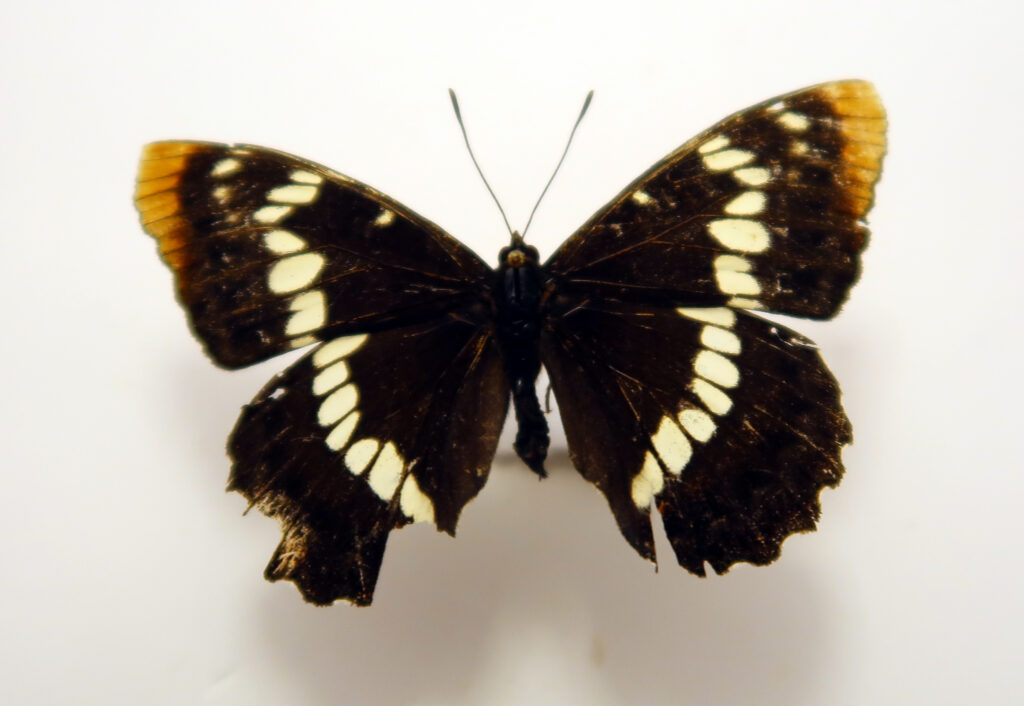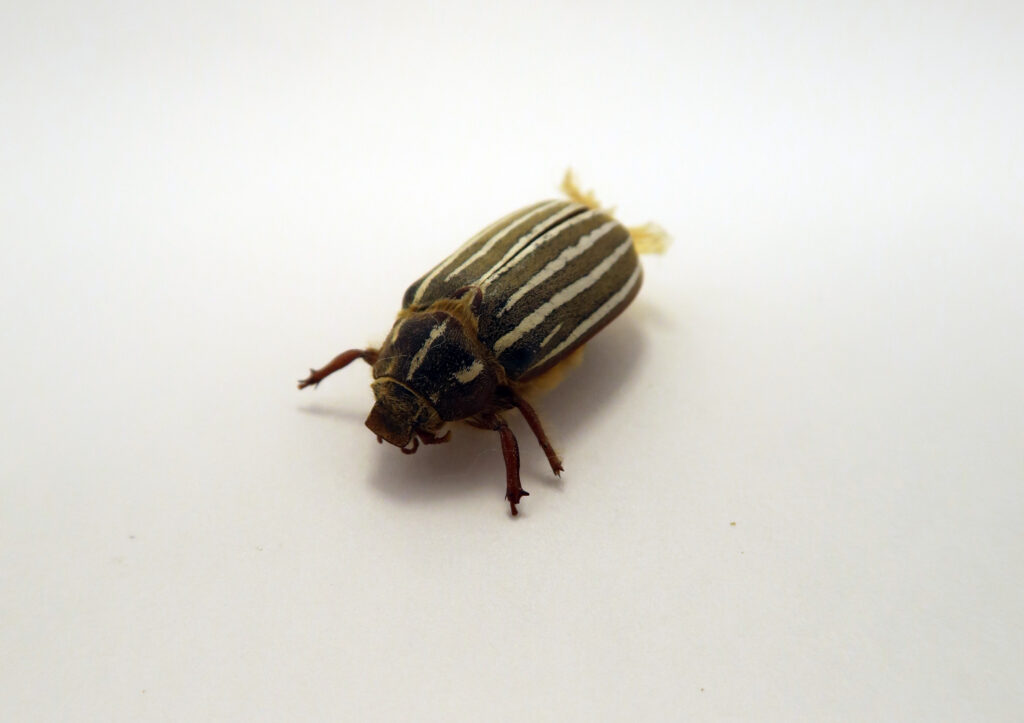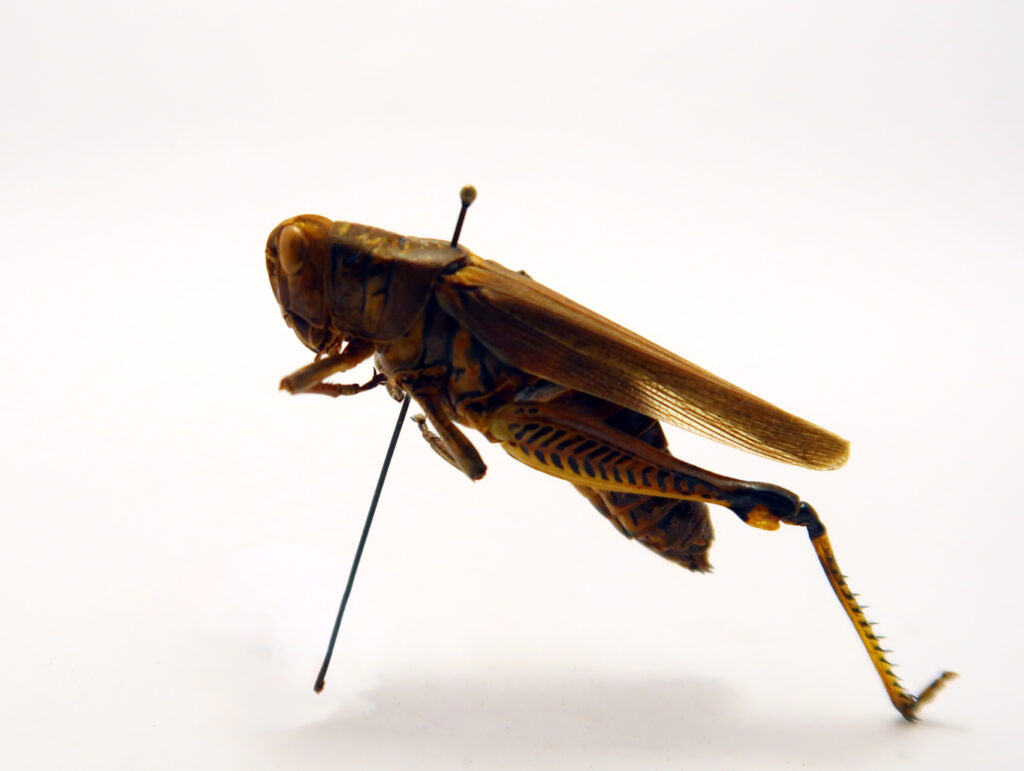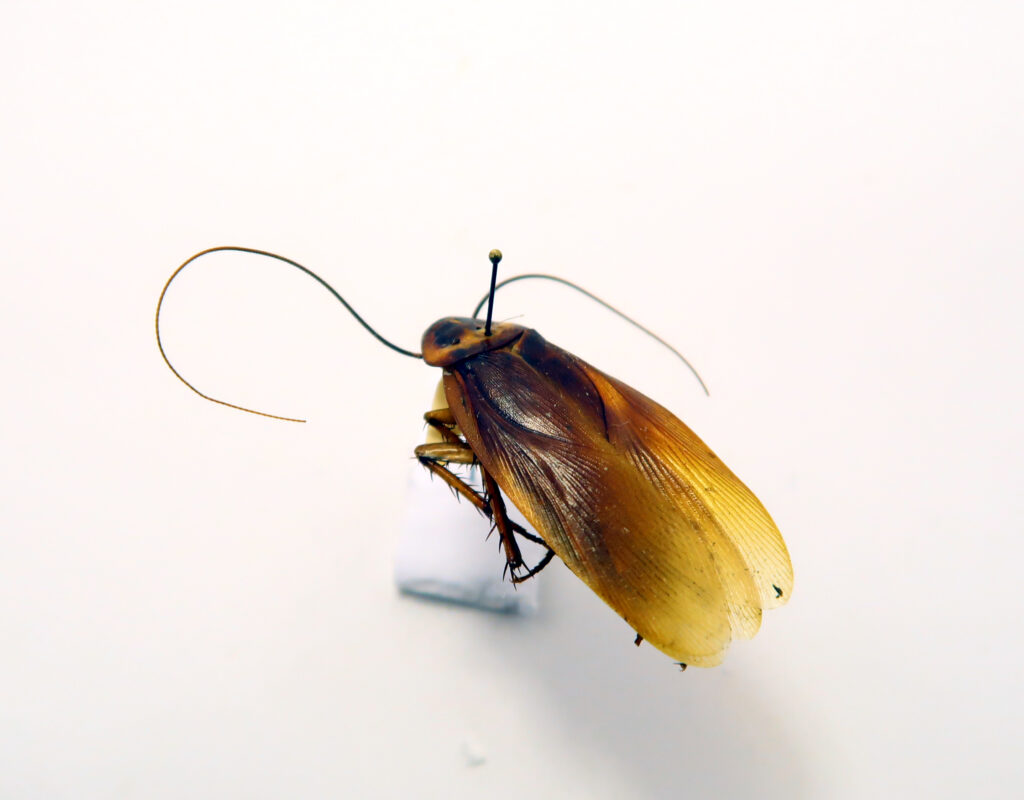Insecta
Insects make up the largest group in the arthropod phylum. They are hexapod invertebrates, which means that they have three pairs of jointed legs, a three-segmented body (head, thorax & abdomen), and an exoskeleton comprised of chiton. Insects also have compound eyes and antennae. Insects are the most diverse group of animals; there are more than one million described species. They make up over half of all known living organisms. Insects are found in every environment, though they are most dominant in terrestrial systems.
Most insects hatch from eggs, and the larval stage often look quite different from the adult stage. Insects have a stiff, inflexible exoskeleton, which constrains their growth. To overcome this, insects develop through a series of molts, in which they shed their exoskeleton and produce a new, larger exoskeleton.
Insects play an incredibly important and varied role in ecosystems. They can aerate and turn soil, provide nutrients to the soil by burying dung, pollinate plants, control pests, and provide food for other animals. Some specific examples of ecosystem services include beetles recycling biological materials, bees pollinating plants and ladybugs controlling aphid populations.
Lepidoptera
Lepidoptera is an order of insects which includes both butterflies and moths. There are about 180,000 species in Lepidoptera and they comprise about 10% of all living organisms. Lepidopteran species are characterized by two sets of membranous wings, large compound eyes, and scales covering the head, body, and appendages. Scales are also present on the body, wings and proboscis of most species. The scales are modified into flat “hair-like” structures that give butterflies their wide variety of colours. Almost all species have two pairs of wings as adults, except for a few that have reduced wings or are wingless. Different butterflies mate and lay eggs on different plants, depending on their larvae. Like most insects, butterflies and moths undergo complete metamorphosis from caterpillar to adult form.
Most species of Lepidoptera engage in flower pollination. Most adult butterflies and moths consume the nectar from inside flowers. They used their proboscis to reach the nectar at the base of the flower. While feeding they brush against the flowers’ stamens and collect pollen. They then transfer the pollen to the next flower they feed on.

Monarch butterfly (Danaus plexippus)
Monarchs have the longest and largest insect migration in North America, traveling up to 8,000 km per year!
Lorquin’s admiral (Limenitis lorquini)
Male Lorquin’s admirals are very territorial and will defend their area aggressively.
Check out All About Butterflies for more information.
Apoidea
Apoidea is a superfamily within the order Hymenoptera, which includes both bees and wasps. Bees are flying insects that are closely related to ants. Bees are most commonly known for their role as pollinators and honey producers. There are over 16,000 species of bees, in seven families. Some bees live in social communities like the honey bee, and others are solitary, like the leafcutter bee. Bees are found on every continent except for Antarctica and in every habitat that contains flowering plants. Bees feed on both nectar and pollen. Nectar is their main energy source, and pollen provides protein. Pollen is also very high in nutrients and is the main food source for their larvae. Bees are preyed on by birds and other insects, such as dragonflies.
Wasps are narrow-waisted insects in the same order as bees and ants. Some wasps including, yellowjackets and hornets live together in nests. The nest is home to an egg-laying queen and non-reproducing worker wasps. However, the majority of wasp species are solitary, with females living and breeding independently. Females typically lay eggs in or near a food source for the larvae. Wasps play many important ecological roles. They can act as predators, controlling pest populations and pollinators. Some species of wasp control pest populations in an unconventional ways, such as by parasitizing them to act as a home for their eggs. Many of the solitary wasps lay eggs on or in other insects and keep them in their nest until the larvae hatch. Wasps parasitize a wide variety of pest insects and are thus valuable in horticulture for biological pest control.

Bee (Clade Anthophila)
A Queen Bee can produce 2,000 eggs a day. Fertilized eggs become females and underutilized eggs become males.
Wasps Nest
Wasps chew wood fibers into a paste-like pulp used to form the nest which is a network of approximately 200 tiny honeycomb shaped cells.
For more information check out Honeybee Central & PETA.
Other Insects
Beetles are a member of the order Coleoptera. They are distinguished from other insects due to their hardened wing-cases, which are formed from a modified front pair of wings. Coleoptera contains about 400,000 species, and is the largest of all insect orders. They comprises almost 40% of all insects and almost 25% of all known animals. Beetles are found in almost every habitat, except for marine and polar habitats. They play many different roles in their ecosystems: often feeding on plants and fungi, breaking down animal and plant debris, and eat other insects. Some beetles are serious agricultural pests, like the Colorado potato beetle, while other are helpful in pest control, like ladybugs.
Grasshoppers are insects which belong to the suborder Caelifera. They are a very ancient living group of chewing herbivorous which date back around 250 million years ago. Grasshoppers are most commonly ground-dwelling and have powerful hind legs which allow them to escape from threats by leaping vigorously. Grasshoppers do not undergo complete metamorphosis. They hatch from eggs into nymphs then undergo five molts, with each becoming more similar to their adult form. Under certain environmental conditions, some species can change color and form swarms, when this occurs they are known as locusts. Grasshoppers are herbivores, and can be problematic pests, especially when swarming.
Cockroaches are members of the order Blattodea, which also includes termites. There are 4,600 species of cockroach with 30 living closely with humans. Cockroaches are an ancient group of insects, with ancestors dating back to the Carboniferous period, approximately 300-350 million years ago. Cockroaches are generalists lacking the special adaptations of most insects. They have chewing mouthparts and are among the most primitive of living insects. Cockroaches a robust insects capable of tolerating a wide rage of climates. They have been known to tolerate the cold of the Arctic and the heat of the tropics.

Ten-lined June Beetle
(Polyphylla decemlineata)
These beetles make a hissing sound when touched or otherwise disturbed.
Grasshoppers
A large grasshopper can jump almost a meter without using its wings
Cockroaches
Cockroaches are among the hardiest insects. Some species are capable of remaining active for a month without food.
Check out BugGuide for more information.


